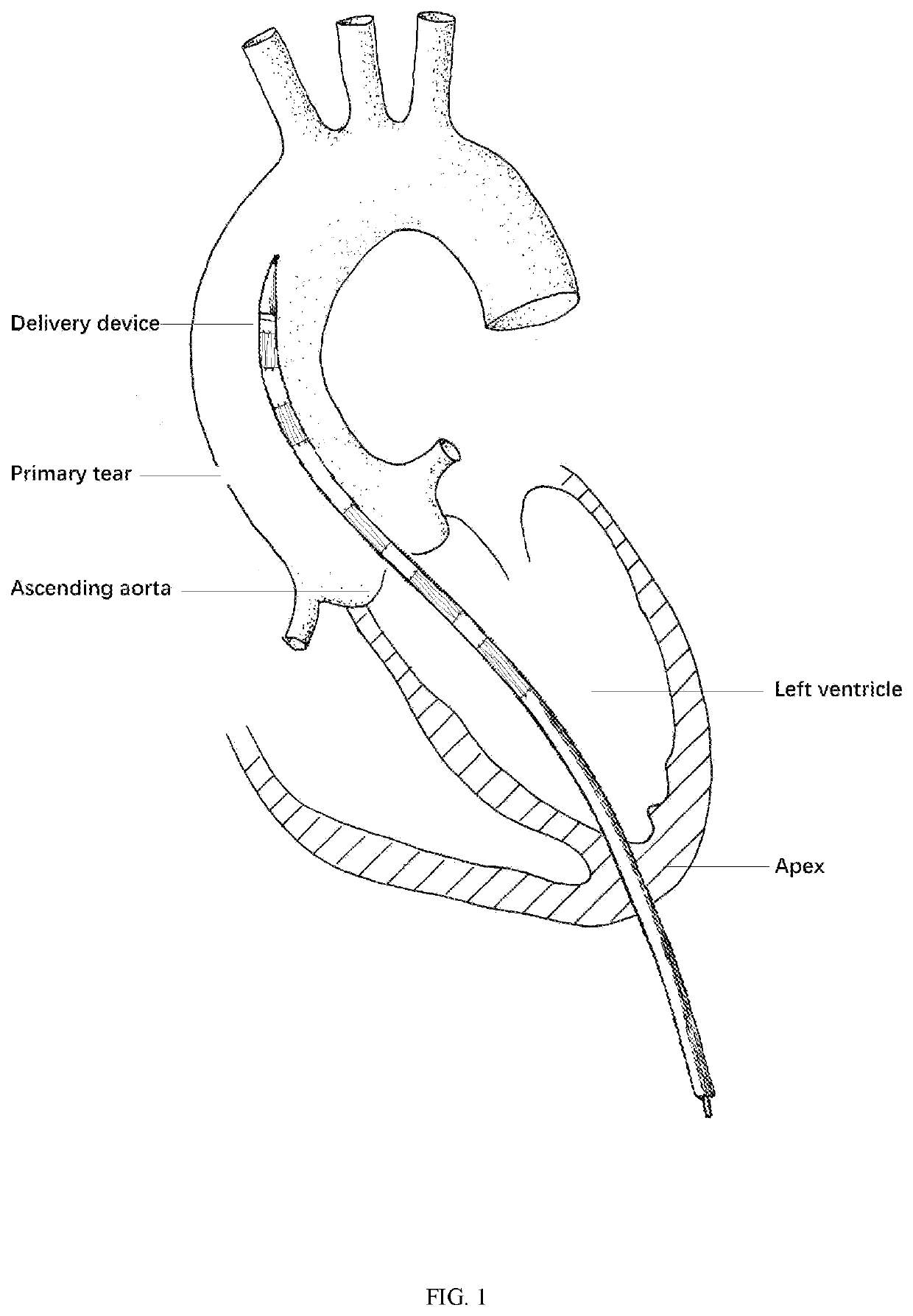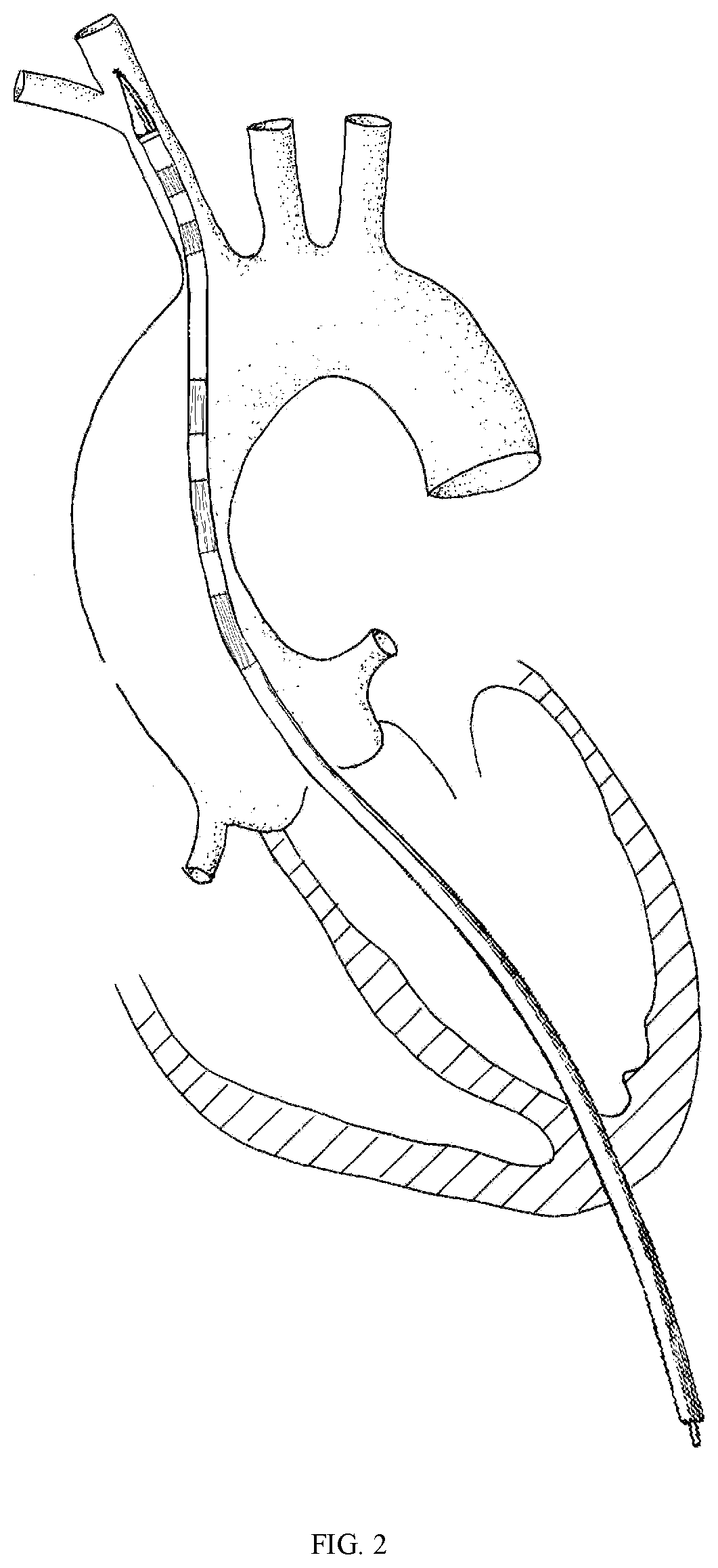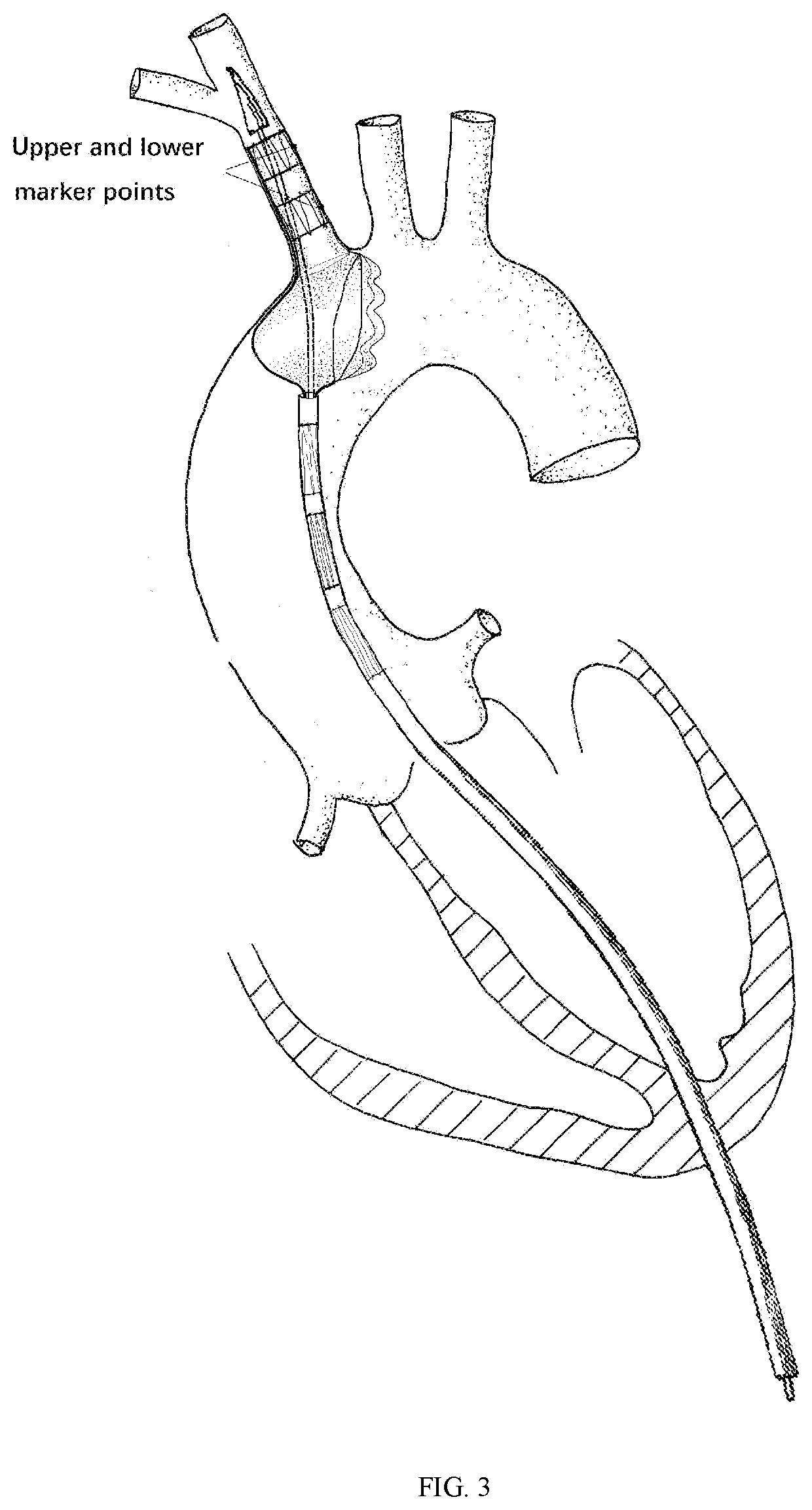A transapical anatomical stent to repair ascending aorta and hemi arch
a transapical anatomical and hemi arch technology, applied in the field of medical instruments, can solve the problems of 20 % patients' deaths, and achieve the effects of safer and more convenient apical approach, more accurate anchoring of the stent, and safer and convenient apical approach
- Summary
- Abstract
- Description
- Claims
- Application Information
AI Technical Summary
Benefits of technology
Problems solved by technology
Method used
Image
Examples
Embodiment Construction
[0065]The technical strategy of the present invention is further described below in the context of a specific case.
[0066]An ascending aorta and hemi arch repair stent graft anchored by innominate artery. The graft delivered through the apical approach is aimed for acute TAAD with certain surgery contraindications as a bridging strategy. It stands out for the following features: The compressed stent is placed in the delivery system, and the innominate artery portion of the stent graft is firstly released through the apical approach. Thereafter, the main stent graft is continuously released. The distal end of the main stent graft is against the distal end of the aortic arch. As the stent graft released to cover the primary tear location, the closure of the primary intimal tear leads to the expansion of the true lumen, elimination of false lumen and recovery of blood flow. The proximal stent graft should be positioned precisely above the sinotubular junction. The longitudinal metal bea...
PUM
 Login to View More
Login to View More Abstract
Description
Claims
Application Information
 Login to View More
Login to View More - R&D
- Intellectual Property
- Life Sciences
- Materials
- Tech Scout
- Unparalleled Data Quality
- Higher Quality Content
- 60% Fewer Hallucinations
Browse by: Latest US Patents, China's latest patents, Technical Efficacy Thesaurus, Application Domain, Technology Topic, Popular Technical Reports.
© 2025 PatSnap. All rights reserved.Legal|Privacy policy|Modern Slavery Act Transparency Statement|Sitemap|About US| Contact US: help@patsnap.com



